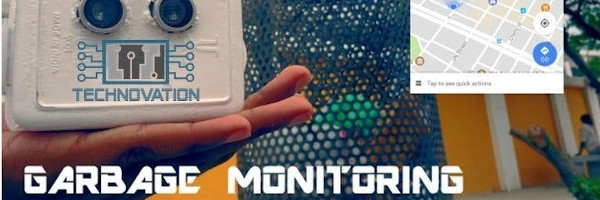IoT based waste management system-Smart Garbage Monitoring System
| IoT based waste management system-Smart Garbage Monitoring System | |
|---|---|

| |
 Waste Management System | |
| Team Organizations | Santa Clara University Dew Moblity IBM Intel; San Leandro Chamber of Commerce; San Leandro Improvement Association (SLIA) |
| Team Leaders | Shivakumar Mathapathi |
| Participating Municipalities | City of San Leandro CA |
| Status | Launched |
| Document | None |
Description
Smart Garbage Monitoring System (SGMS) is a real time indicator of the level of trash at any given time. SGMS Optimize waste collection routes and ultimately reduce fuel consumption. It allows trash collectors to plan their daily/weekly pick up schedule. SGMS is to detect garbage level in Garbage Can. A unique identification number ( ID) is given to each can. As soon as the Garbage Can is full/ over flowing then a SMS is sent to the server from where all the garbage collection vehicles are allotted.
Challenges
- Ensuring the Ultrasonic distance sensor are correctly placed.
- Fewer times there could be liquid/water thrown in to the bin. Need to design water proof electronics and embedded software.
- Ensure data accuracy reported by the distance sensors.
- Availability of 3G/4G Cellular networks.
- Reliable data analytics tools to integrate with desktop and mobile OS.
Solutions
Major Requirements
Proposed to utilize Intel IoT platform and IBM Bluemix cloud assuming Cellular external module can be plugged in.
- Step 1: Design of enclosures which can fit to the desired garbage bins and manufacture few prototype/s.
- Step 2 : PCB assembly, installing distance sensors and routing the wire harness.
- Step 3 : Writing device driver software and Web based software.
- Step 4: System Integration – Microcontroller board/ SIM module and Cloud components.
- Step 5: Run pilot for two months.
- Step 6: Identify cities who are interested to deploy.
Performance Targets
| Key Performance Indicators (KPIs) | Measurement Methods |
|---|---|
|
|
Standards, Replicability, Scalability, and Sustainability
Design and development of SGMS is based on open standards including available high –performance, low power, low cost general purpose development board that can be interfaced with any web sockets /cloud.
- Utilizing industry standard communication technologies such as Wi-Fi 3G/4G Cellular for data transmissions and collection.
- Incorporating an open-cloud, open-source, secure development platform (such as IBM Bluemix) to develop interactive web and mobile applications and high-performance data analytics.
- Comply with MQTT and CoAP IoT Protocol for effective communication from sensor data to the server. Such interoperability allows user to access the real time data on any desktop or mobile devices.
- The initial goal is to try in one city then replicate to multiple cities
- The product is designed using most open source components (available locally ) there by any city /enterprise can scale it up and manufactured in large volume.
- The system will have its own business model to create sustainable revenue
Cybersecurity and Privacy
Impacts
- Lowers waste and recycling costs by reducing the number of times compactor(s) are emptied.
- Reducing the environmental hazards to the residents
- Saving tax payers money to pay less on the garbage collection fees.
- New products such as advertisement on smart can may be included
- Local event signage can be posted electronically.
Demonstration/Deployment
- Phase I Pilot/Demonstration:
The pilot working model will be available by June 2016 and demonstrate a working model at the tech show in June 2016
- Phase II Deployment:
Real-time working application tied into city at city-wide scale, supporting over 40 % of the city.